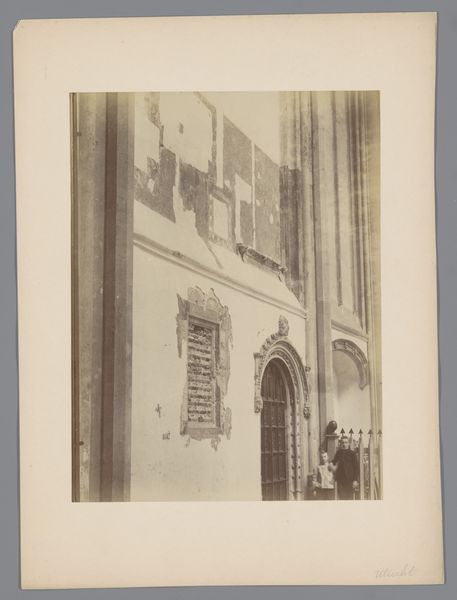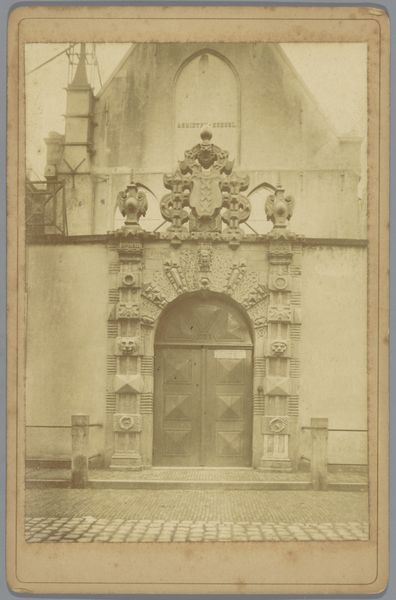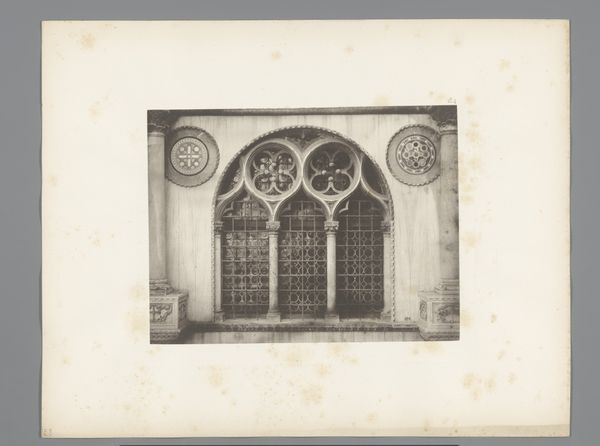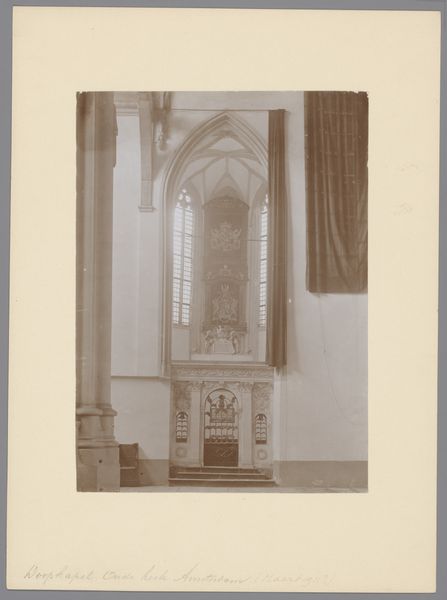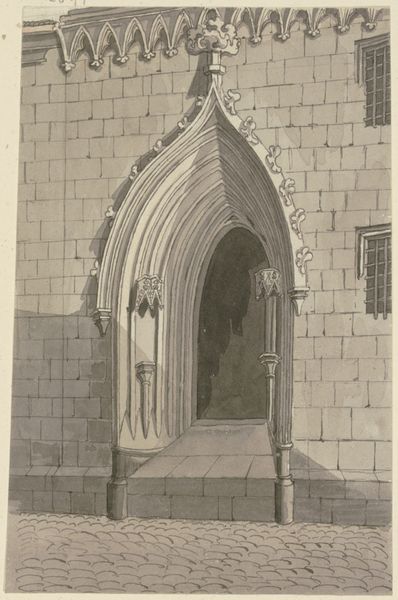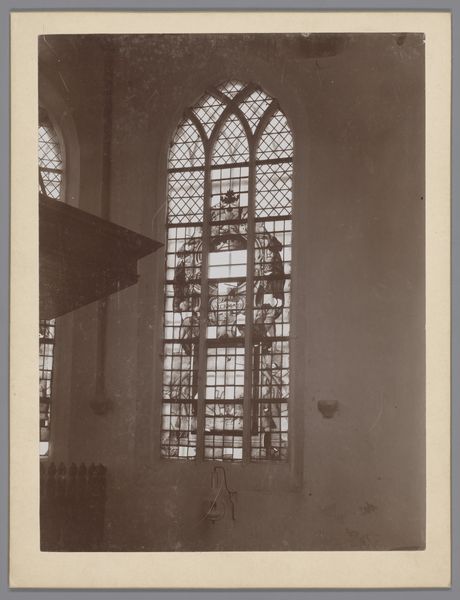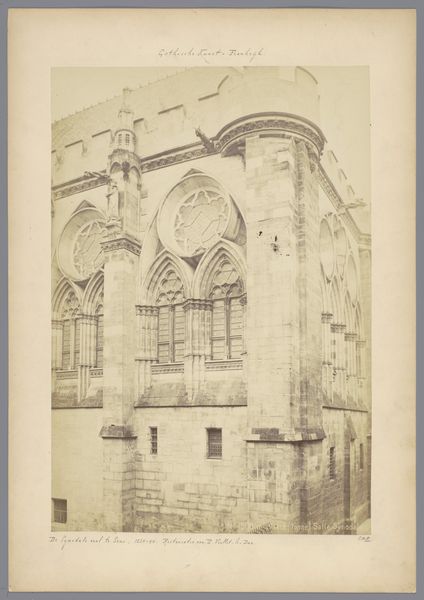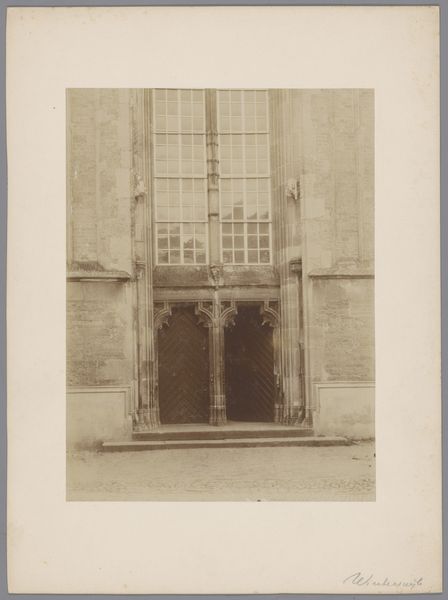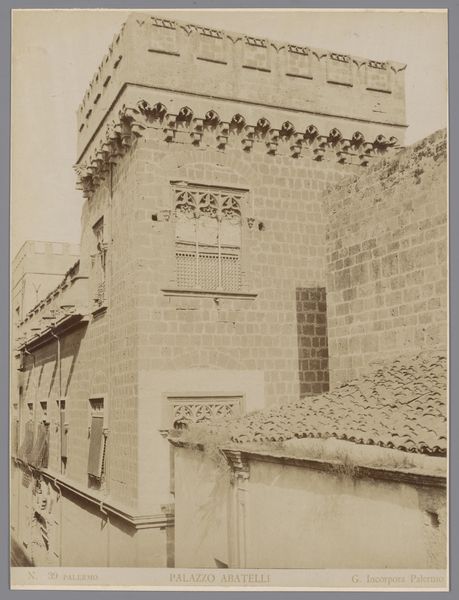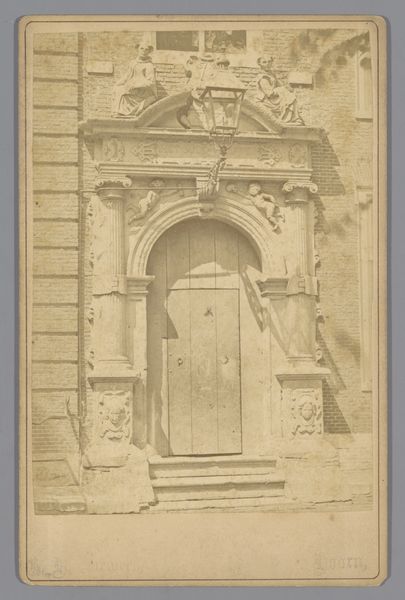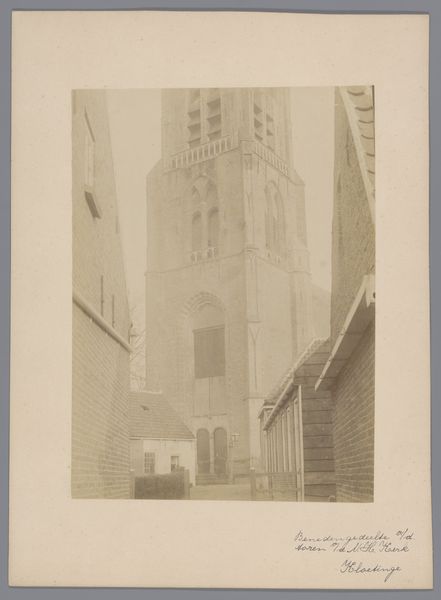
print, photography, architecture
# print
#
photography
#
cityscape
#
italian-renaissance
#
architecture
Dimensions: height 201 mm, width 258 mm
Copyright: Rijks Museum: Open Domain
Curator: Here we have "Window of the Archbishop's Palace in Palermo", a photographic print by Giuseppe Incorpora, dating from between 1856 and 1914. Editor: Wow, what a stunning piece of captured light and shadow. It's funny how something so rigid—a stone window—can feel so delicate, almost like fossilized lace. Curator: The architectural elements are key here. Consider the pointed arch, a quintessential element of Gothic design. Note, too, the intricate tracery; observe how the geometry creates complex patterns that invite visual exploration. Editor: I'm getting this vibe of old secrets whispering through stone. The closed shutters, that aged facade—it's like peering into a story, imagining lives unfolding behind that very window. Does that make sense? Curator: Absolutely. We might think of this image as a study in contrasts: the permanence of stone against the fleeting nature of light, the grand scale of the palace versus the intimacy implied by a single window. The artist has manipulated those to build the structure you are noticing. Editor: I guess what grabs me is the texture—you can almost feel the grain of the stone, the coolness of the marble, the dust motes dancing in that trapped sunlight. You mentioned permanence, but I also find it melancholic, this relic frozen in time, as light reveals those layers in between history and decay. Curator: Indeed, Incorpora manages to evoke both timelessness and temporality within a single frame. It's precisely in that tension, in the intersection of form and light, that the piece finds its lasting significance. Editor: Yes. Gazing upon that stone tapestry, the sunbeams trapped, well it prompts this lovely mix of curiosity and peace—it’s almost as though Palermo’s past, its heart, whispers right from the stones. I might stay lost right here dreaming of its past lives.
Comments
No comments
Be the first to comment and join the conversation on the ultimate creative platform.
